Archie’s magic lantern show
Archie 100 reflects the diversity of works that the nation’s most famous portraiture prize has attracted over its 100-year history – and it has some interesting stories to tell about the changing face of Australian society.

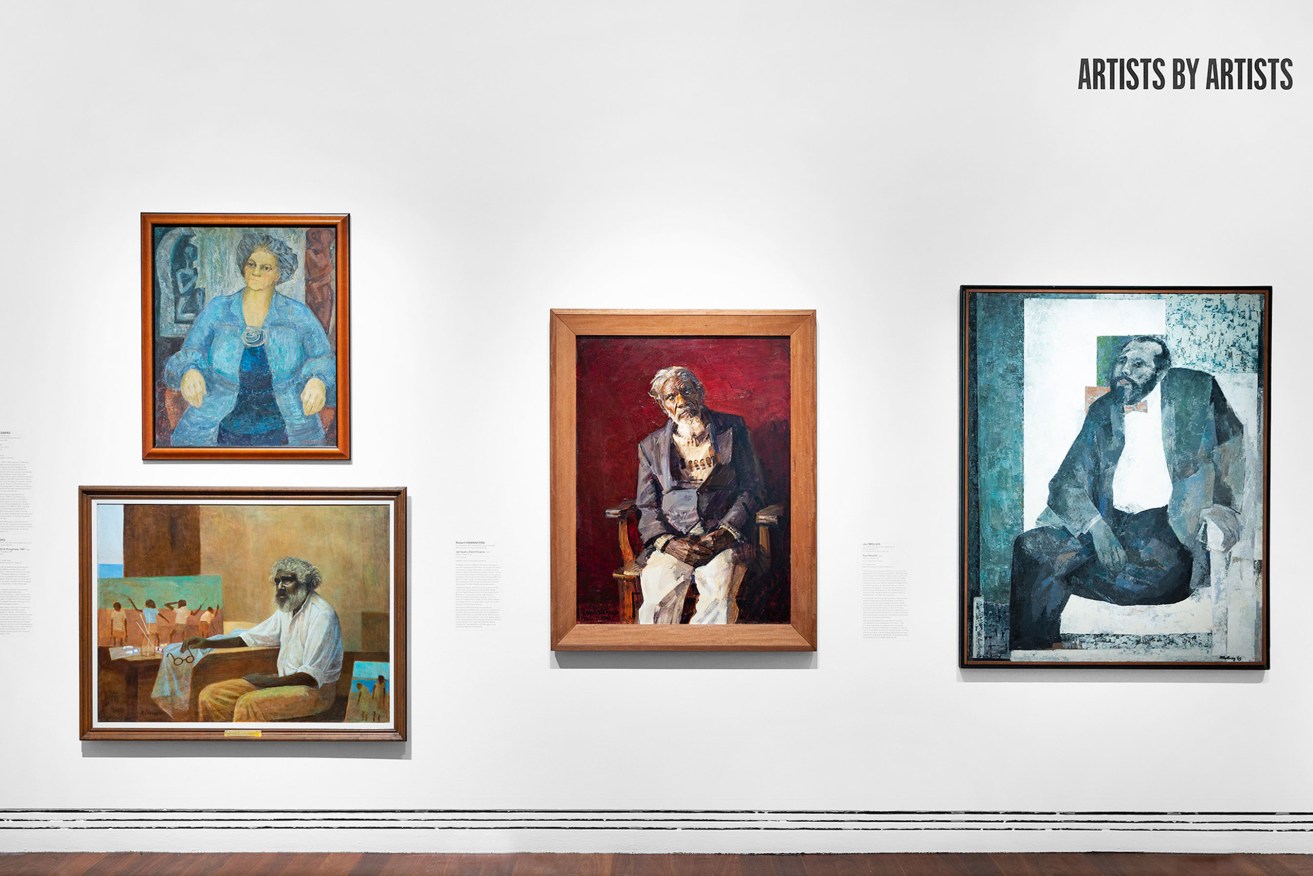
An installation view of the 'Archie 100' exhibition at the Art Gallery of South Australia – portraits are grouped thematically under different titles. Photo: Saul Steed
Archie 100: A Century of the Archibald Prize
Art Gallery of South Australia
The Archibald Prize is sometimes described as Australian art’s equivalent to the Melbourne Cup. It has its favourites and outside chances. Then there’s the dash for the cash and winner takes all. The occasional protest adds suspense.
It is a creaky analogy but serves to emphasise that most major cultural rituals have morphed into media and corporate sponsorship events in which the performers, the athletes, drivers, musicians, and so on, are packaged in association with commercial products. But, fortunately, art and artists are not easily co-opted with marketing spin.
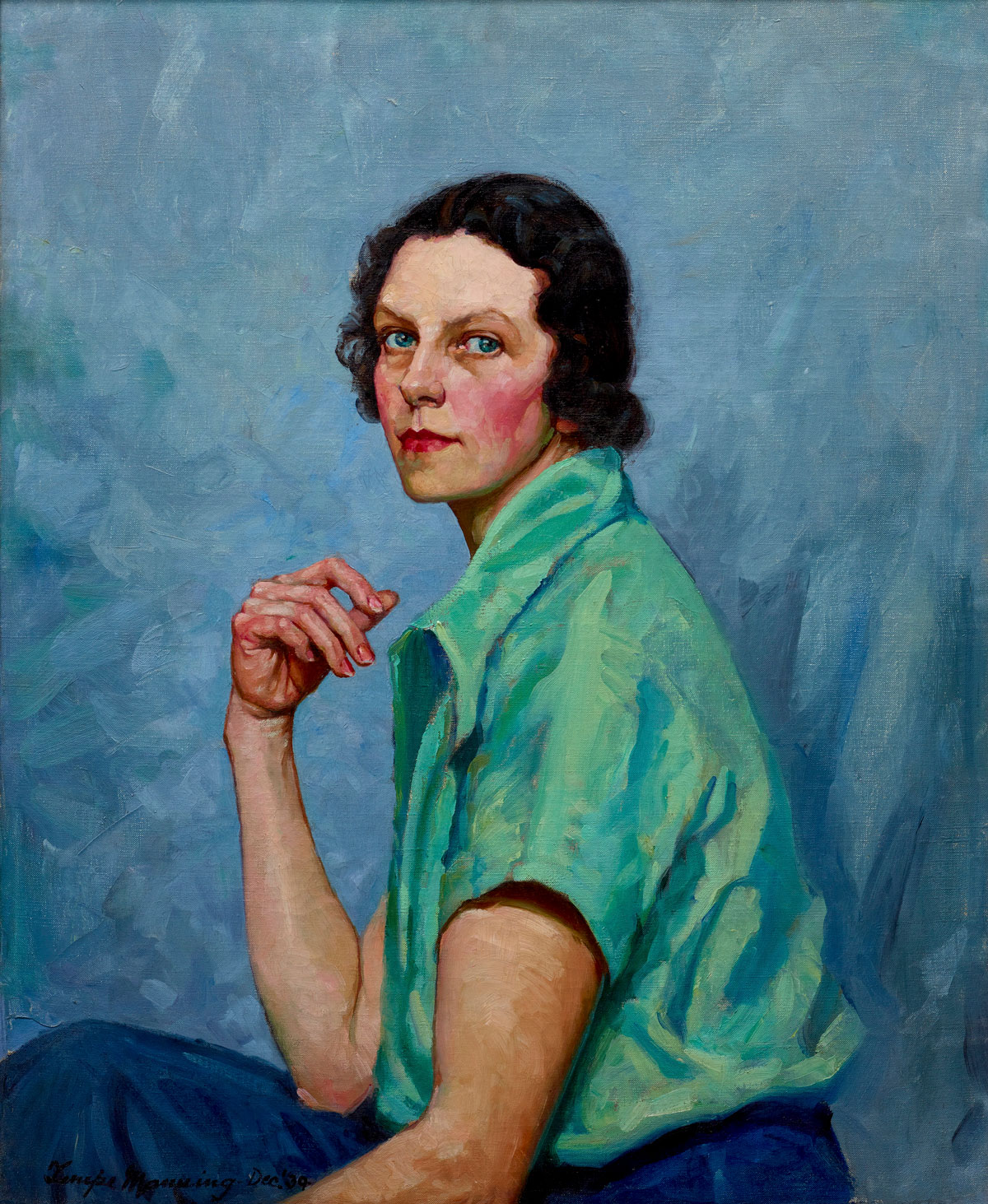
Tempe Manning, Self-portrait, 1939, oil on canvas, 76.0 x 60.5cm; Art Gallery of NSW, acquired with the support of the Art Gallery Society of NSW 2021, © Estate of Tempe Manning.
As evident in Archie 100, interesting art bends rules, and may invoke a larrikin spirit of irreverence towards its subjects, or just be downright confronting.
That’s not to say that the Archibald is safe from a little corporate massaging. Archie 100 marks the beginning of Oroton’s new long-term partnership with the Art Gallery of New South Wales (which presents the prize). The company’s creative director, Sophie Holt, is excited by the Archie artists’ colour palettes and imagining them transposed into her “moodboards”. Her brimming enthusiasm for Tempe Manning’s 1939 Self-portrait (“Look at her coral lips, her peach cheeks and her eyes which are grey, all those colours together are just so divine, so clever”) is clearly colour-driven.
That the Manning painting was selected as the cover image for the catalogue could be read as a “sponsors’ pick”. Like a number of mid-20th-century modernist works in the exhibition, with their higher-key palettes and considered colour relationships, this portrait really sings for its supper. But its real interest, despite its obvious “moodboard” affinities, lies in the artist’s right hand, with its attenuated fingers curled over like a breaking wave. Cue George Lambert’s Self-portrait with gladioli, with the artist’s left hand artfully spread like a peacock’s crown.
Archie 100, because of its freewheeling association of styles and figurative tropes, encourages such selective scanning. As a means of training the eye to slow down and really look, hand hunting never fails. Almost all subjects are doing something with their hands. Melbourne socialite Gladys Collins’ fingers are elegantly interlaced without concealing that rock on her finger. Bryan Westwood’s Paul Keating has one hand characteristically tucked inside the other, a gesture of polite restraint from a man who could bring down the House with a few rhetorical gestures.
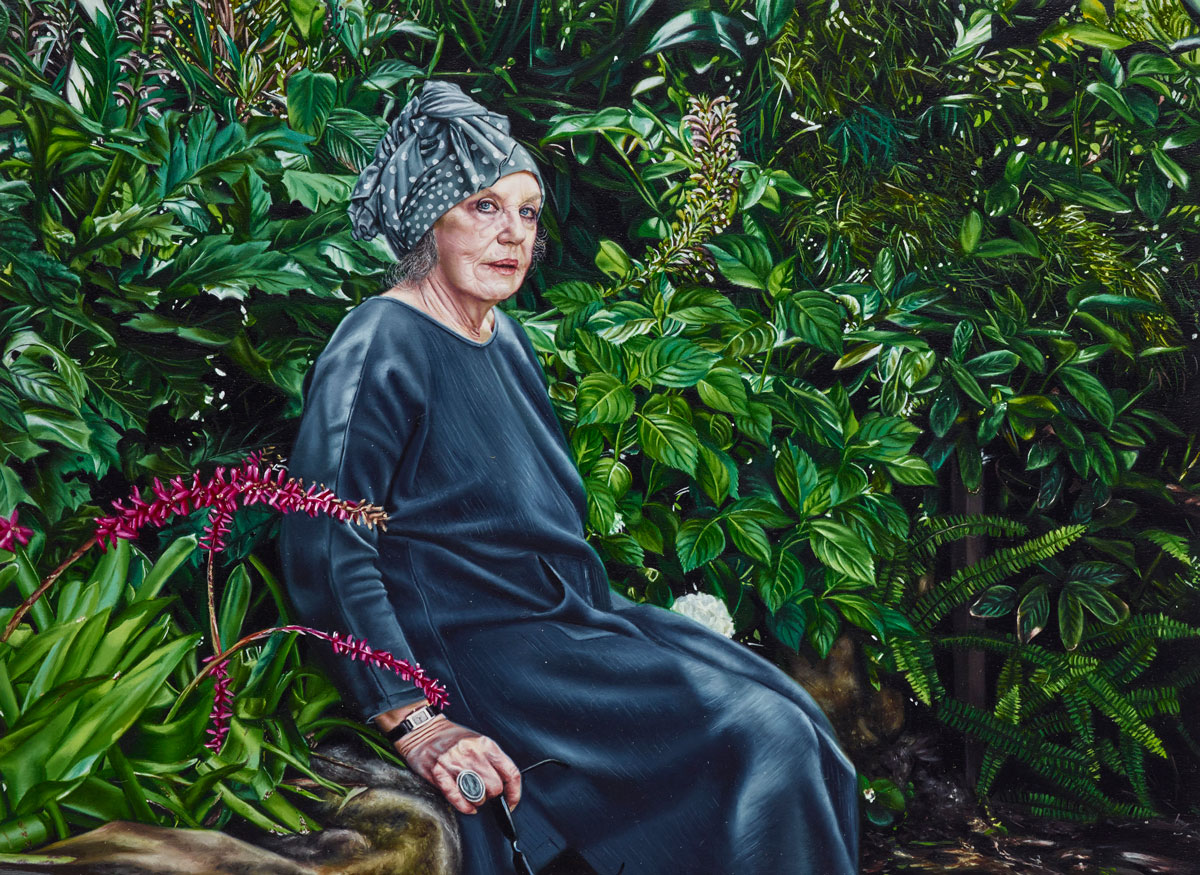
Natasha Bieniek, Wendy Whiteley, 2016, oil on wood, 13.5 x 18.5cm; Collection of the artist, © Natasha Bieniek. Photo: Mim Stirling
Hand hunting and the like is fun but I imagine most viewers will start from the big picture and go out and down from there. The exhibition begins with an introduction to the competition and the Geelong-born journalist and founder of The Bulletin magazine, John Feltham Archibald (1856–1919). JF Archibald set aside one-tenth of his estate to the Art Gallery of New South Wales for the establishment of an annual prize for the best portrait “preferably of some man or woman distinguished in art, science or politics”.
From the outset, the idea of a portrait art competition captured the imagination of professional artists, aspiring amateurs and the viewing public. Since 1921, 6000 portraits have been exhibited in the Archibald Prize – almost one sixth of these self-portraits. Archie 100 reflects the diversity of works entered across this period but it is not a showcase of past winners.
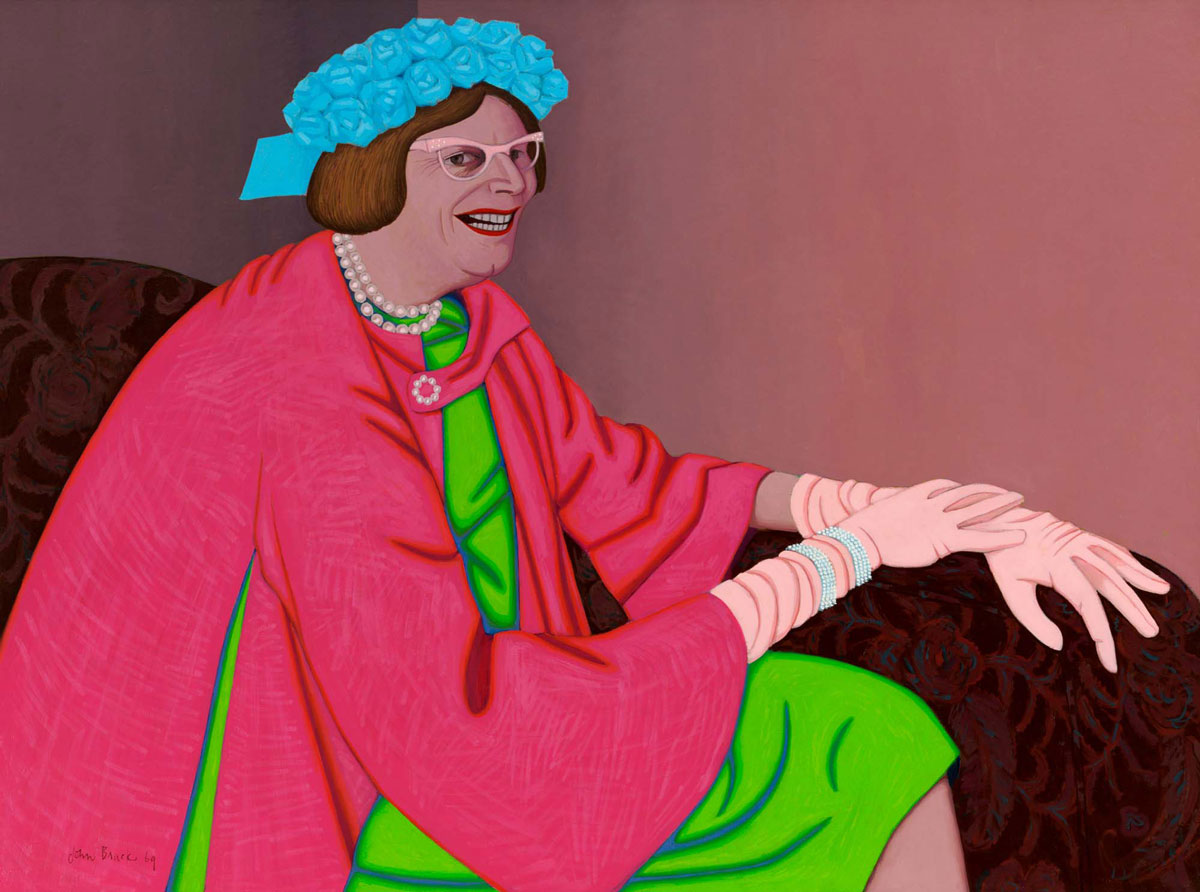
John Brack, Barry Humphries in the character of Mrs Everage, 1969, oil on canvas, 94.5 x 128.2cm; Art Gallery of NSW, purchased with funds provided by the Contemporary Art Purchase Grant from the Visual Arts Board of the Australia Council, 1975, © Helen Brack.
Setting aside the challenges of trying to locate works which have been destroyed, are lost or too fragile to travel, the project seized the opportunity to tell some stories, about Archibald’s vision but also about the changing face of Australian society, using works which have all been included in Archibald Prize exhibitions.
Archie 100 curator Natalie Wilson says that the works collectively “uncover changes in society in engaging ways, enabling people to experience how artistic styles and approaches to portraiture have changed over time”.
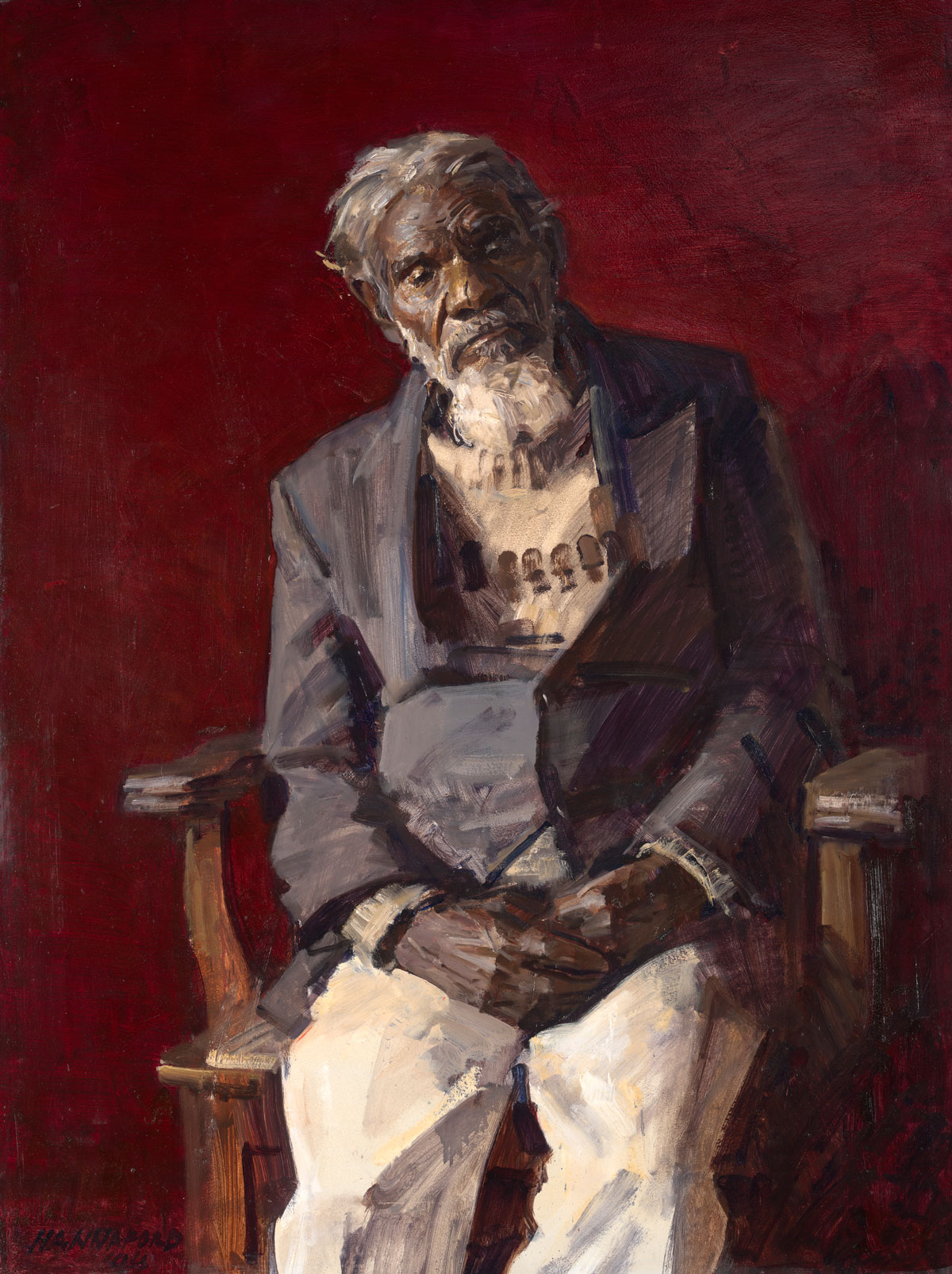
Robert Hannaford, Jarinyanu David Downs, 1995, oil on canvas, 119 x 89.2cm; National Library of Australia, Canberra, nla.obj-136228916, © Robert Hannaford.
Thematic groupings such as “The cult of celebrity” and “Local heroes and national icons” offer stepping stones for viewers to reconnect with familiar figures such as Molly Meldrum, Albert Namatjira, Roy and HG, and Cate Blanchett. But within each grouping are many unfamiliar names and faces of individuals who deserve wider recognition.
Ultimately, this show is all about portrait painting. As the wide diversity of styles and interpretations demonstrate, one size does not fit all. An impeccably articulated realist image may tick a lot of skills boxes but fail to capture the essence of the sitter. The strongest and most interesting interpretations come across as a kind of conversation between artist, pictorial aesthetics, the paint medium and the subject.
It may be a stretch to extend the Italian notion of sprezzatura (an apparent nonchalance hiding the effort and skill invested in difficult actions) to diverse styles of portrait painting but in the gravitas of Robert Hannaford’s full-frontal portrait of Jarinyanu David Downs, Louise Hearman’s devilishly nuanced take on Barry Humphries’ “truly fugitive face”, Nicholas Harding’s compelling capture of the Shakespearian actor John Bell as Lear, Elisabeth Cummings’ inspired decision to render fellow artist Jean Appleton’s presence as an interterlacing of figure and room, and Ben Quilty’s confronting maelstrom of viscous paint, evoking the inner emotions of a serviceman, there is a diverse menu of interpretations that will reward the slow look.
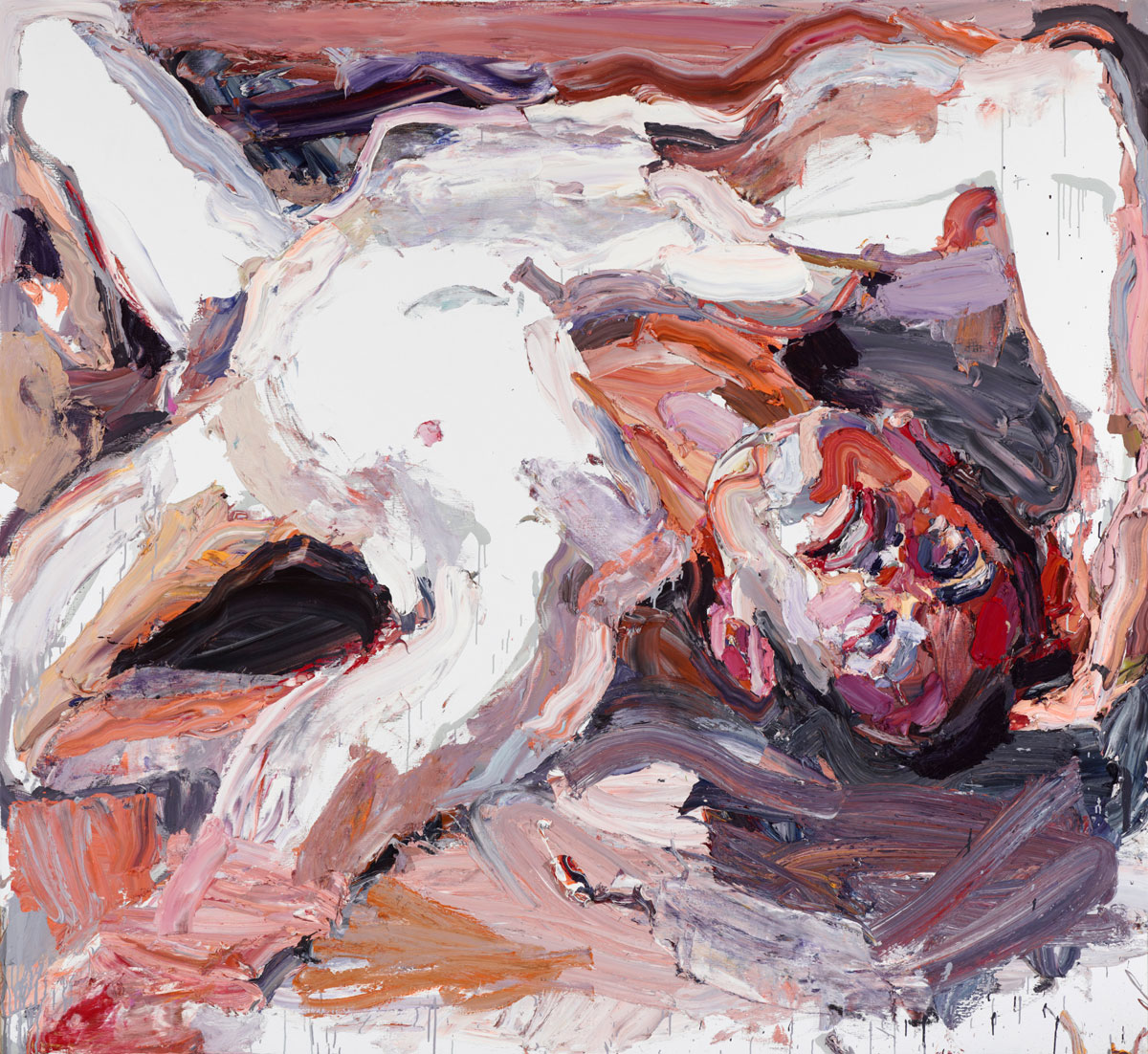
Ben Quilty, Captain S, after Afghanistan, 2012, oil on linen, 210 x 230cm; courtesy the artist. Photo: AGNSW
Archie 100: A Century of the Archibald Prize is at the Art Gallery of South Australia until October 3. Running concurrently is Robert Wilson: Moving Portraits (read InReview’s coverage of that exhibition here).




